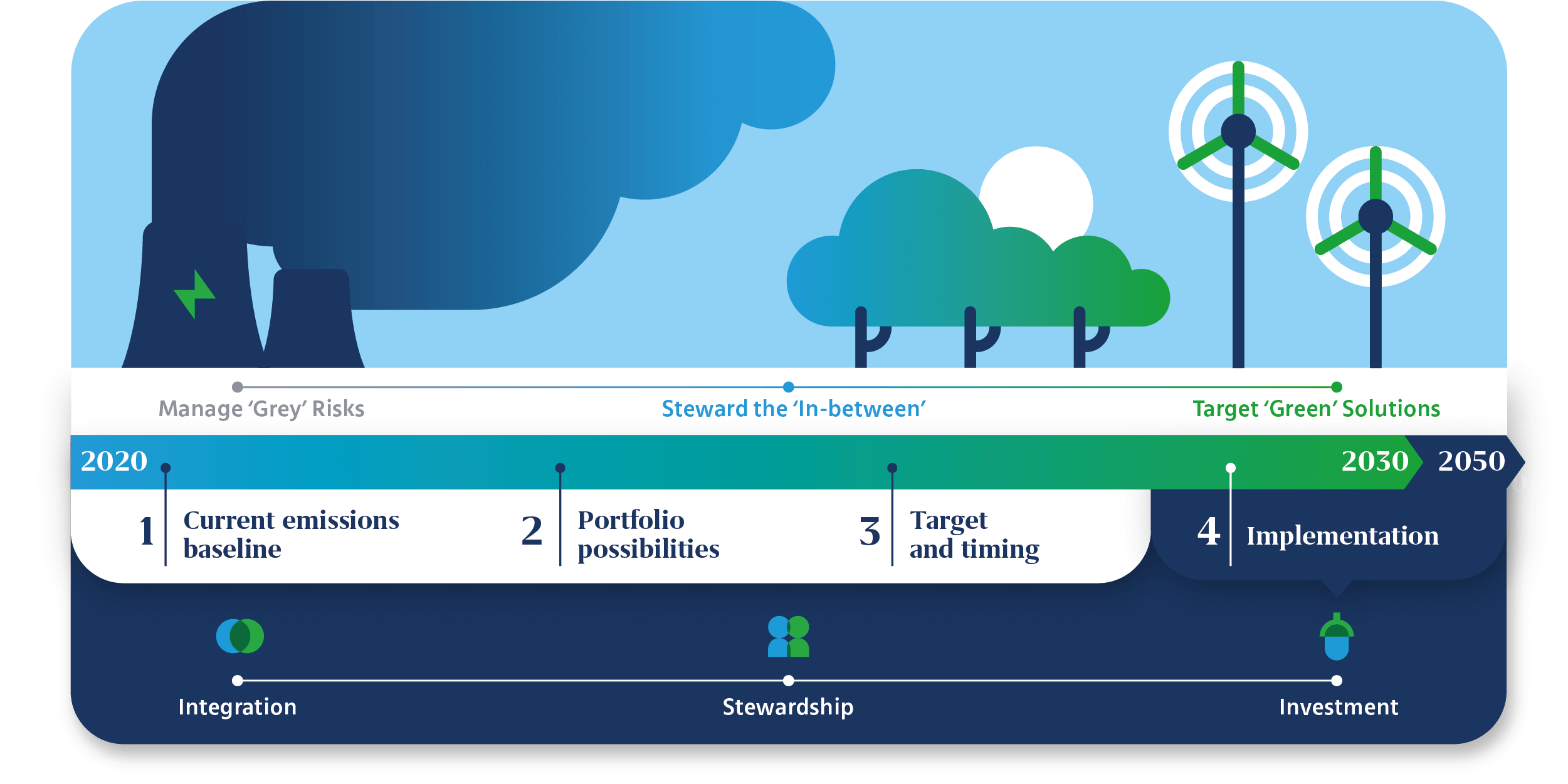Why we all need a transition plan
The scientific evidence shows the situation is urgent. We’ve already had a 1°C increase in average global temperatures over preindustrial times. According to current science1, we could be facing a 2°C increase in as few as 30 years — a climate humans have never experienced. As a result, investors should educate themselves on the downside risks they face because of the transition — as well as potential opportunities to benefit from it. In particular, many companies, investors and governments have announced alignment with the targets of the 2015 Paris Agreement, including taking measures to prevent temperatures from increasing past the 1.5°C threshold2.
Addressing climate change requires reducing fossil fuel emissions. Studies indicate that the transition to a low carbon economy is already underway3. Consider how technology has driven down the cost of renewables. 2019 was the fifth year in a row in which renewable capacity additions, outstripped additions from fossil fuels and nuclear combined, for example, NextEra Energy now has a larger market capitalization than ExxonMobil.
As investors, we need to try to assess companies’ ability or willingness to transition toward limiting global temperature increases and how well-positioned they are for the low-carbon economy. To make a proper assessment, we need to get serious about the risks. One of the key findings of our Investing in a Time of Climate Change — The Sequel report was that investors should position for a below 2°C scenario, which we believe will offer improved investor outcomes.


